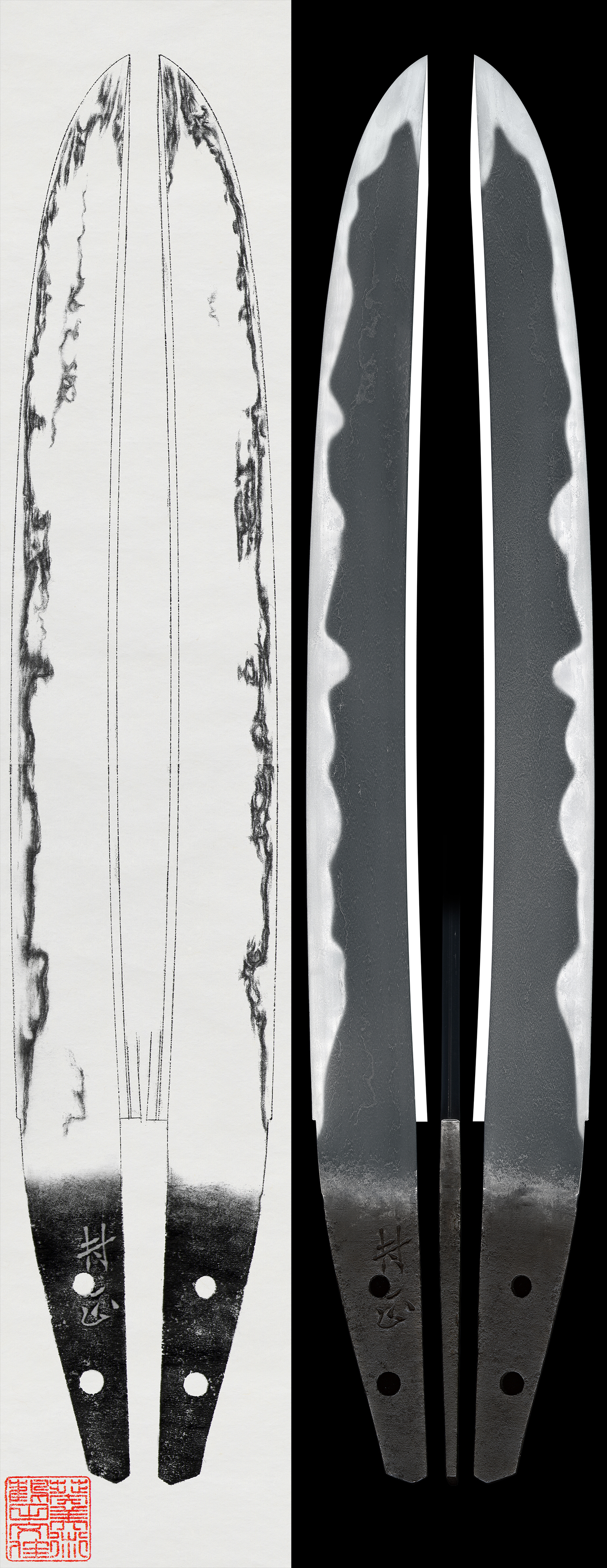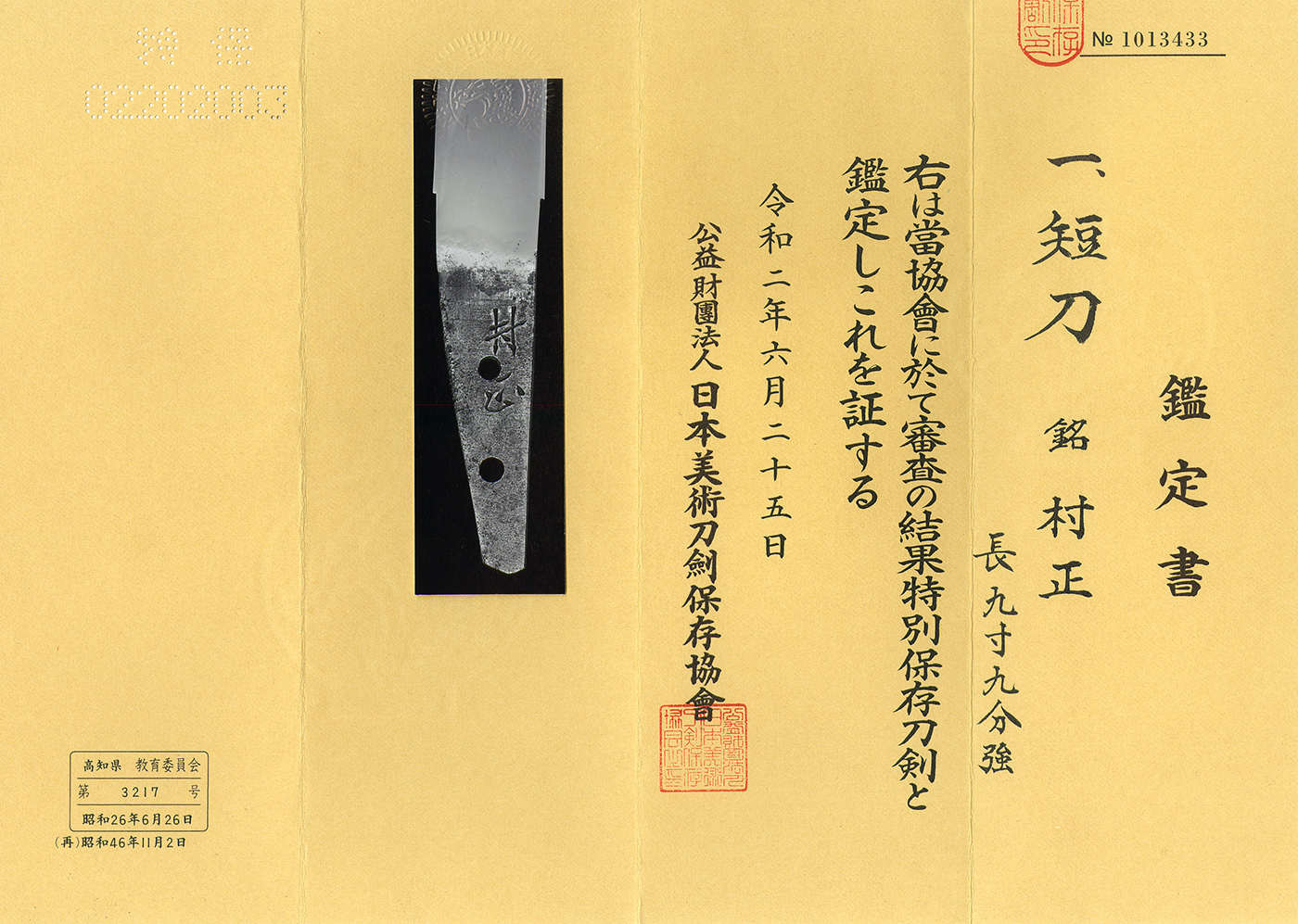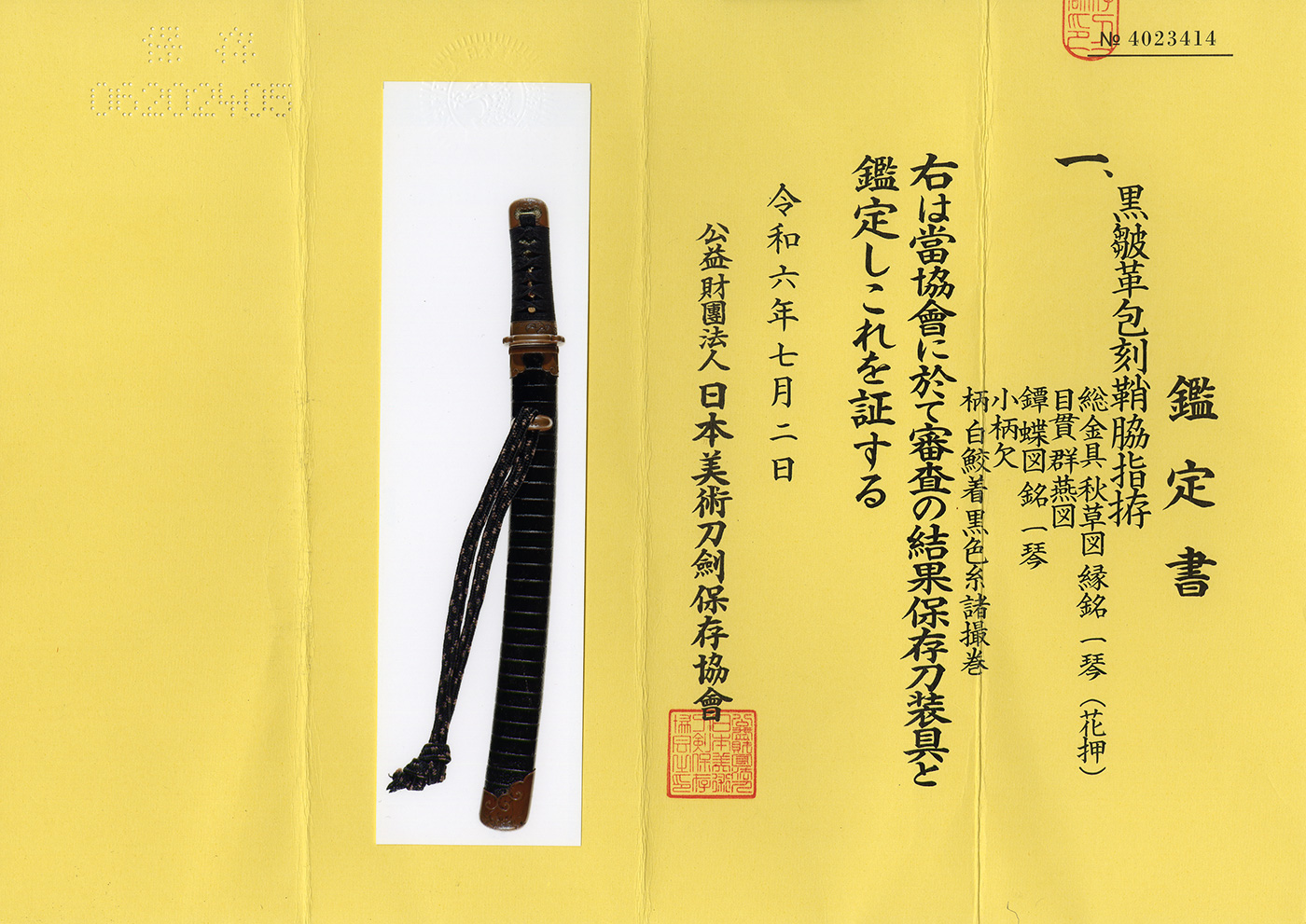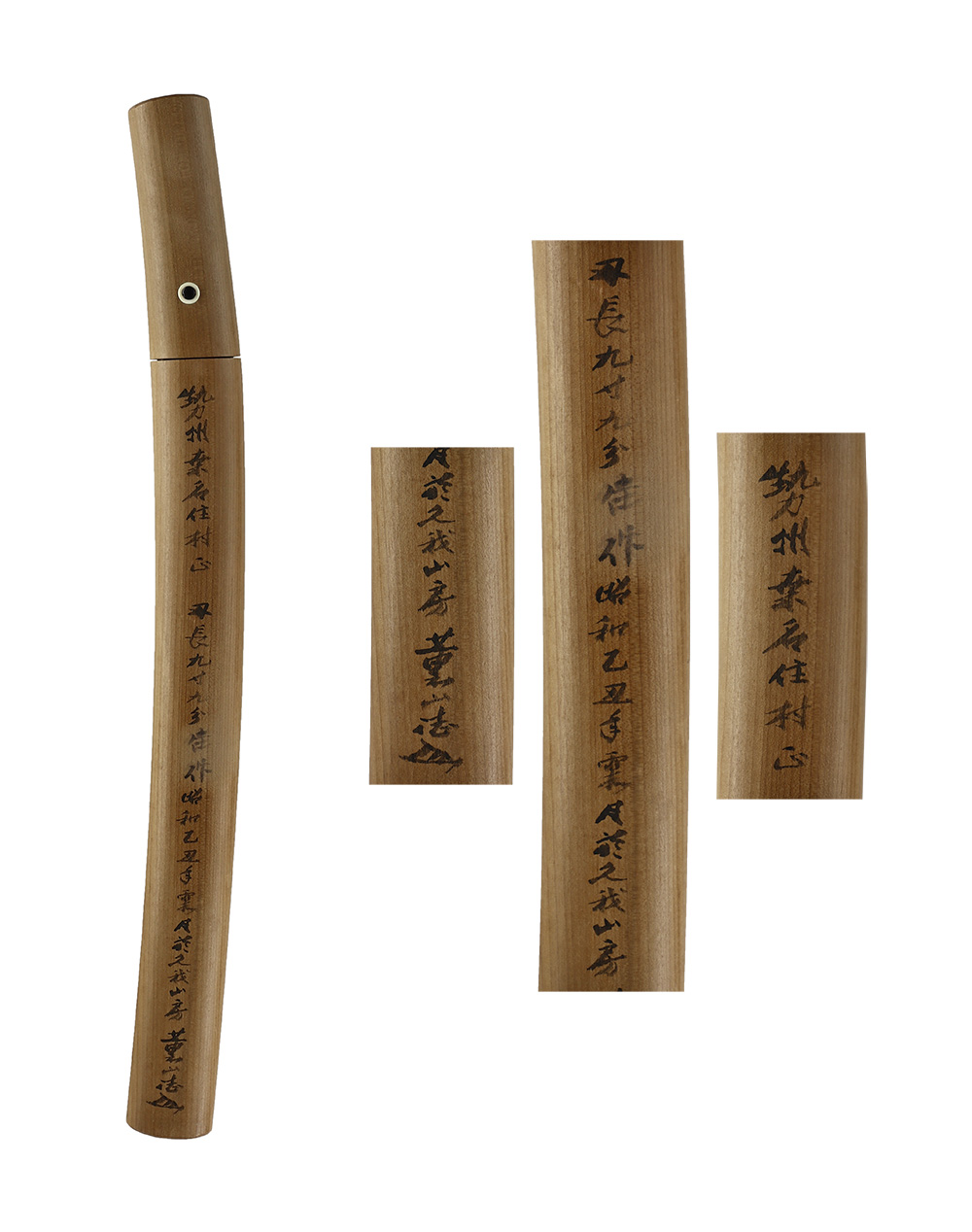Ordering Number: 24304
Tanto in Shirasaya (NBTHK Tokubetsu Hozon Token)
Signature: Muramasa 村正
Sayagaki: Written by Dr. Kunzan
Seishu Kuwana Ju Muramasa
Blade length 9 sun 9 bu, good piece of work
written by Kunzan in the house of Kugayama in November 1985
We divide 4 sections for each sword as Saijyo Saku, Jyojyo Saku, Jyo Saku, and Regular Saku.
This work is ranked Saijo Saku for Muramasa.
Habaki: Gold Foil Double-layered Habaki
Blade Length: 29.9 cm (11.8in)
Curvature: 0.3 cm (0.12in)
Mekugi Hole: 2
Width at Base (Motohaba): 3.01 cm (1.19in)
Thickness (Kasane): 0.50 cm (0.20 in)
Sword Weight: 220 grams
Era: Muromachi Period
Shape: wide and thin Mitsumune long Tanto. The Nakago is shaped like the belly of pregnant fish, which is characteristic of Muramasa.
Jigane: The mixture of Ko-itame and Mokume with clear texture.
Hamon: Gunome midare with intense Nie with two sides matching each other. Boshi is rounded.
Features: Muramasa was a school of swordsmiths active in Kuwana, Ise Province, whose founder was Sengo Muramasa. The sword had been popular since that time for its sharpness and unique blade pattern with match front and back sides, but in the Edo period, the Tokugawa family considered Muramasa to be an abomination, and some of them were disposed of or had their inscriptions removed.
Koshirae: (NBTHK Hozon Tosogu)
metal fittings: copper plate with engraving of autmn plants.
Fuchi: inscription: Ikkin(written seal mark)
Menuki: a picture of sparrows
Tsuba: inscription: Ikkin with engraving of butterflies
Koduka: inscription: Goto Hokyo Ichijo(written seal mar)(non-guaranteed)
Aoi Art’s Comment: This work is a typical Muramasa piece with the front and back blades aligned,and the Jigane is beautiful. The inscrption is clearly engraved, making it a rare piece. The metal fittings used in the Koshirae (excluding the Kozuka) were made by Funeda Ikkin, the metalsmith in the late Edo period. He studied under Goto Ichijo in Kyoto and was known for his intricate realistic engravings. The Kozuka has the signature of Ichijo, a student of Goto Ikkkin. The reverse side of the Kozuka is made of Shibuichi showing its highquality. However, the authenticity of the signature cannot be confirmed.
NBTHK Tokubetsu Hozon Certificate
NBTHK Tokubetsu Hozon Tosogu Certificate
Aoi Art Estimation Paper
Whole Oshigata
Price:9,500,000JPY
Order Form
Related Items:
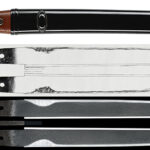 Tanto:Muramasa 村正
Tanto:Muramasa 村正
 Tanto: Amada Akitsugu (Living National Treasure, Important Intangible Cultural Property) Showa 44 Nen 2 Gatsu Hi (February 1969)(NBTHK Tokubetsu Hozon Token)
Tanto: Amada Akitsugu (Living National Treasure, Important Intangible Cultural Property) Showa 44 Nen 2 Gatsu Hi (February 1969)(NBTHK Tokubetsu Hozon Token)
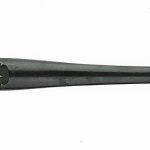 Kogai:Mumei(Unsigned)(Ko-goto)(22th Juyo Tosogu)
Kogai:Mumei(Unsigned)(Ko-goto)(22th Juyo Tosogu)
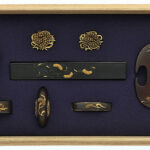 Set of Tosogu:Tomei:Tsuba, Kozuka, Fuchi-Kashira, Menuki, Ura-gawara, Kurikata (NBTHK Juyo Tosogu, 65th): Millet
Set of Tosogu:Tomei:Tsuba, Kozuka, Fuchi-Kashira, Menuki, Ura-gawara, Kurikata (NBTHK Juyo Tosogu, 65th): Millet
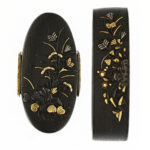 Fuchikashira: Goto Hokyo Ichijo (written seal mark) (NBTHK Hozon Tosogu)
Fuchikashira: Goto Hokyo Ichijo (written seal mark) (NBTHK Hozon Tosogu)
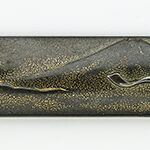 Kozuka:Goto Norihashi Ichijo(Kao)(NBTHK Tokubetus Hozon Tosogu) Mr.Fuji
Kozuka:Goto Norihashi Ichijo(Kao)(NBTHK Tokubetus Hozon Tosogu) Mr.Fuji
